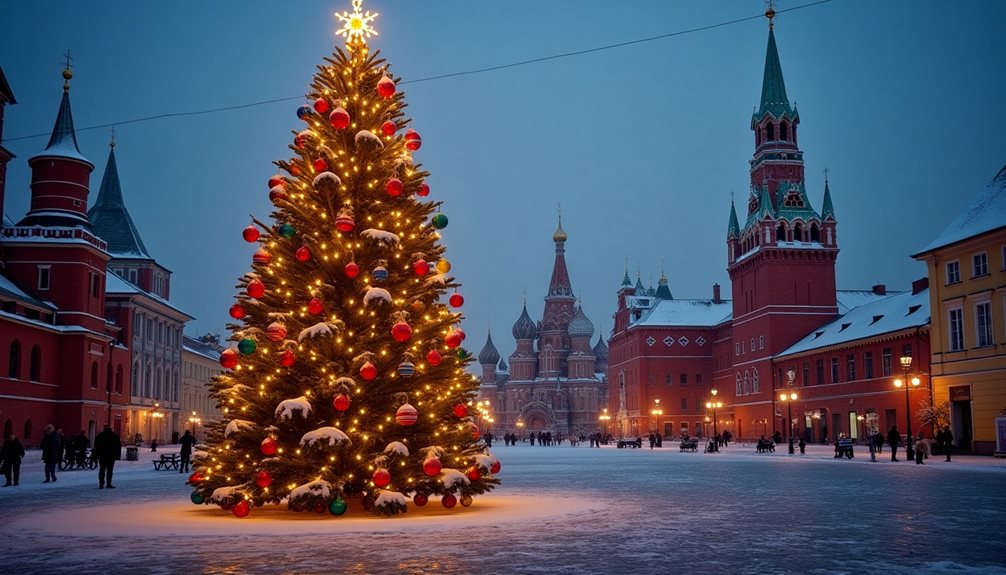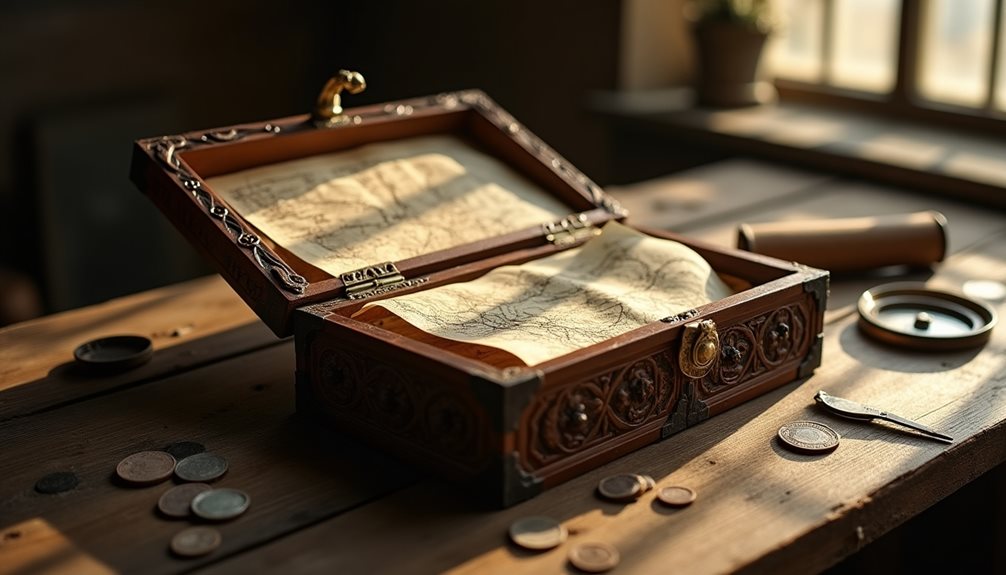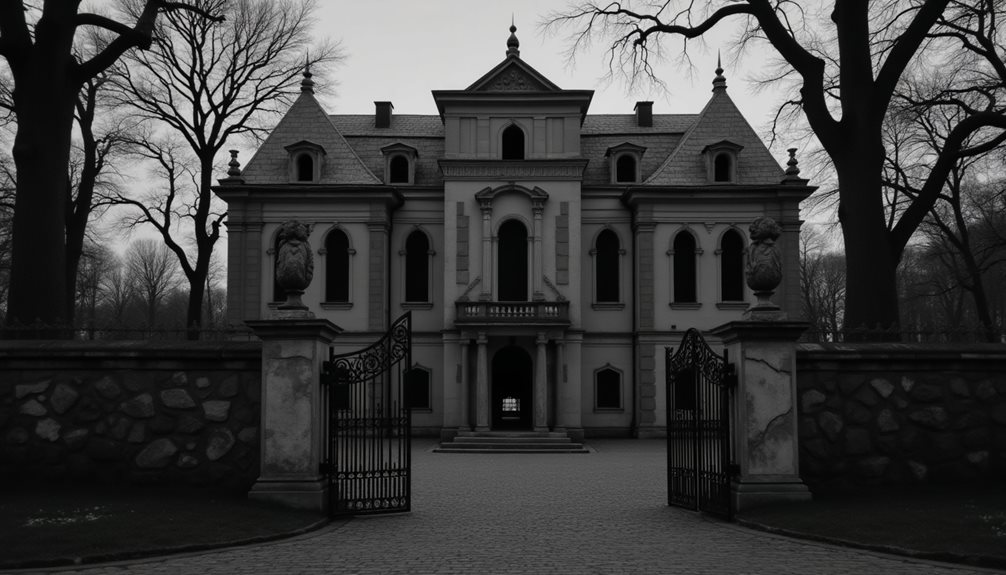The epic world of byliny, a cornerstone of East Slavic folklore, offers a fascinating glimpse into the cultural ethos and mythic grandeur of ancient Russia. Among its pantheon of legendary figures, Svyatogor emerges as a complex hero whose tales of immense strength and poignant vulnerability invite deeper examination. As we explore his storied exploits, one must ponder how these narratives not only reflect the societal values of a bygone era but also resonate with the timeless struggle between human ambition and the capricious whims of fate. What lessons do Svyatogor’s adventures hold for modern audiences?
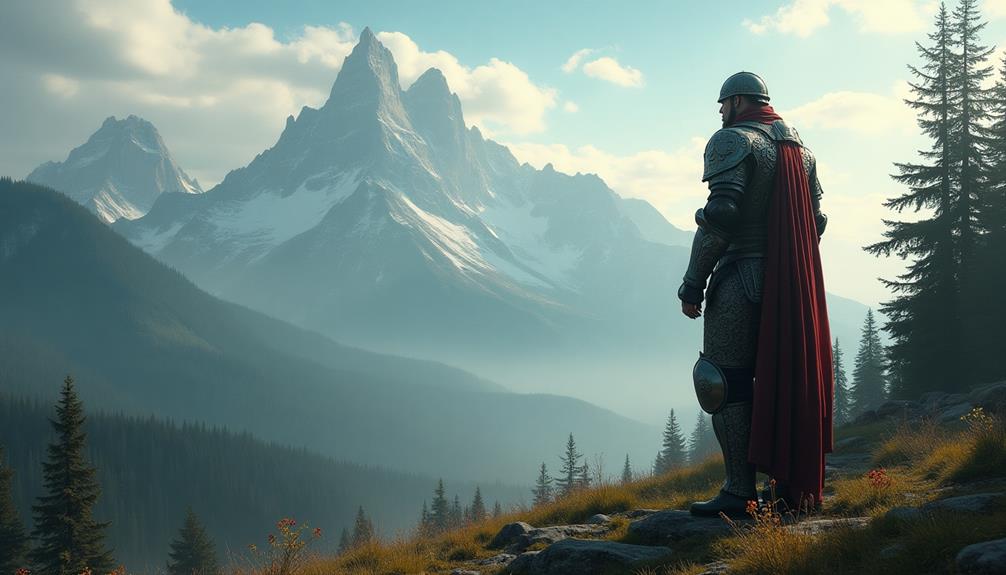
Through the art of epic storytelling, byliny encapsulate the values, beliefs, and social norms of the communities from which they originate. They are a reflection of the power of oral traditions in preserving folklore and ensuring its transmission across generations.
Byliny are characterized by their focus on heroic archetypes, figures who embody the ideals and aspirations of the society they represent. These heroes, such as the mighty Svyatogor, are portrayed as larger-than-life figures, yet their narratives are imbued with universal themes of struggle, honor, and resilience.
The thematic content of byliny often revolves around the tension between individual heroism and communal responsibility, reflecting the complex interplay between personal and collective identities. As a pillar of cultural heritage, byliny continue to resonate, offering insights into the timeless human quest for meaning and belonging amidst the ever-evolving landscape of cultural identity.
Historical Context
Rooted in the oral traditions of the East Slavic peoples, byliny are epic narrative poems that offer profound insights into the cultural psyche and historical evolution of medieval Rus. These tales are a reflection of epic storytelling, serving as a vessel for cultural preservation through generations.
Passed down orally, byliny captured the imaginations of listeners with their vibrant depictions of hero archetypes and mythical landscapes. They functioned not merely as entertainment but as an integral part of the community’s identity, reflecting societal values and the collective memory of a time when historical events and myth were intricately intertwined.
The origins of byliny are deeply embedded in the pre-literate societies of the East Slavs, where oral tradition was the primary means of preserving history and cultural norms. These narratives evolved over time, shaped by the storytellers who imbued them with contemporary relevance.
The hero archetypes, such as the indomitable Svyatogor, were often larger-than-life figures who traversed mythical landscapes, embodying the virtues and vices of the time. In this way, byliny not only chronicled the epic quests of their heroes but also mirrored the evolving social and cultural landscapes of the Slavic peoples.
Emergence during the Kievan Rus period
During the Kievan Rus period, the byliny began to emerge as a significant cultural phenomenon, reflecting the complex tapestry of historical, social, and political changes of the time.
Rooted in the oral tradition, these epic narratives were essential in shaping the cultural identity of the early Slavic people. As the Kievan Rus expanded and came into contact with various cultures and influences, the byliny served not only as entertainment but also as a means of preserving and transmitting shared values and historical memories.
The mythic symbolism contained within these byliny provided a framework for interpreting the world, offering insight into the collective psyche of the Kievan Rus. Hero archetypes, such as the mighty Svyatogor, embodied traits that were highly revered, such as strength, bravery, and loyalty.
These characters were not merely fictional heroes but represented ideals that the society aspired to emulate.
As the byliny emerged during the Kievan Rus period, their influence extended beyond mere storytelling, embedding itself deeply into the cultural and historical fabric of the time. These epic tales, primarily transmitted through an oral tradition, carried cultural significance that transcended generations.
The byliny served as a repository of collective memory, preserving the values, beliefs, and historical ethos of the Slavic people. Through their narrative structure, these stories employed hero archetypes like Svyatogor, whose larger-than-life attributes symbolized the ideal virtues and struggles of the society.
The oral tradition of the byliny allowed for a dynamic interaction between storyteller and audience, fostering a shared cultural identity. This interaction reinforced folk belief systems, embedding mythical and historical narratives into the psyche of the community.
The hero archetypes within these stories, including the mighty Svyatogor, not only entertained but also educated, providing moral and ethical guidance through their adventures and challenges.
Epic traditions across cultures often serve as mirrors reflecting the historical and cultural landscapes from which they emerge. The Russian byliny, featuring figures like the hero Svyatogor, offer a fertile ground for comparison with other epic traditions. These narratives epitomize cultural exchanges, revealing how societies have borrowed and adapted themes and motifs from one another.
The narrative structures within byliny, with their emphasis on heroism and struggle, resonate with global epic traditions that also celebrate the heroic archetypes of their own cultures.
In examining the symbolic representations within byliny, one finds parallels in the folklore evolution of other regions. Svyatogor’s towering presence and superhuman feats echo through similar stories worldwide, where heroes often embody the ideals and aspirations of their people.
Such universal themes foster understanding of how disparate cultures can share a common narrative thread while maintaining distinct identities. The heroic archetypes in byliny are not isolated phenomena; they are part of a larger tapestry of storytelling that transcends geographical boundaries.
The narrative tapestry of byliny can be further enriched by examining their similarities to the Greek epics, particularly those centered around heroes like Jason and Perseus. Both traditions glorify epic heroes through tales of mythical journeys and cosmic battles, underlining themes of fate and destiny that resonate across cultures.
In byliny, Svyatogor embodies the archetype of a formidable hero, much like Perseus or Jason, who are both tasked with monumental quests that test their strength and character. These heroes navigate worlds fraught with challenges that reveal their virtues and flaws, serving as cultural symbolism for the societies from which they emerge.
The Greek epics often depict heroes battling creatures or commencing on quests decreed by the gods, symbolizing the human struggle against cosmic forces. Similarly, Svyatogor’s tales are imbued with supernatural elements and divine interventions, reflecting the Russian cultural landscape.
Moreover, both byliny and Greek epics emphasize the inexorable nature of fate and destiny. Whether it is Svyatogor’s predestined path or Jason’s quest for the Golden Fleece, these narratives suggest that the heroes’ journeys are not just personal, but cosmic, influencing the world around them.
The Hero Svyatogor

Amid the vast tapestry of Russian folklore, the figure of Svyatogor emerges as an emblem of mythical heroism and profound cultural significance. Rooted in the oral traditions known as byliny, Svyatogor’s legacy is intricately woven into the Russian cultural narrative. His stories, often characterized by his Giant’s strength and heroic journeys, serve not only as entertainment but also as reflections of the values and beliefs of the communities that nurtured them.
Svyatogor’s presence in folklore symbolizes the intersection of human aspiration and divine intervention. His legendary feats and encounters are imbued with a symbolism that transcends mere physical prowess, delving into themes of destiny, fate, and the boundaries of human capability. As a figure of immense power, Svyatogor’s narratives explore the dynamics of strength and vulnerability, providing a lens through which audiences can examine the nature of heroism itself.
Emerging from the vast expanse of Russian folklore, Svyatogor stands out as a figure of immense stature and strength, embodying the quintessential traits of a giant and a bogatyr. His giant strength is not merely physical but imbued with layers of mythical heritage, symbolizing the profound connection between the earth and the supernatural.
As a hero in the byliny, Svyatogor’s character is defined by his towering presence and the heroic feats he accomplishes, which are often depicted as tests of his physical and moral fortitude.
Svyatogor’s narrative is interwoven with cultural symbolism, reflecting the duality of his existence as both protector and challenger. His encounters often involve moral dilemmas, where his immense power must be balanced with wisdom and restraint.
These stories underscore the complexity of his character, portraying him as a hero whose strength is as much a burden as a gift.
In analyzing Svyatogor’s role within the byliny, one sees a hero whose giant strength serves as both a metaphor for natural forces and a narrative device to explore themes of responsibility and the limits of power.
Through his legendary tales, Svyatogor remains an enduring icon of Russian cultural identity.
Key Adventures
The narrative involving Ilya Muromets and his wife is a tapestry of adventure and steadfast loyalty that underscores the multifaceted nature of heroism in the byliny tradition. Central to this story is Ilya’s love, which is both a source of strength and a crucible of challenges. His devotion to his wife often places him at the intersection of marital challenges and heroic duties, creating a dynamic where personal and larger-than-life obligations collide.
The narrative does not shy away from exploring the domestic life of this legendary hero, revealing that even the most formidable figures face loyalty dilemmas at home. Heroic sacrifices are a recurring theme, as Ilya often finds himself torn between the call of duty and the bonds of matrimony.
His adventures, while outwardly thrilling, are also introspective journeys that investigate the complexities of loyalty — to both his homeland and his family. These tales highlight the tension between fulfilling societal expectations and nurturing personal relationships, offering a nuanced portrayal of heroism.
Through this narrative, the byliny not only celebrate Ilya’s legendary feats but also humanize him, presenting a hero who grapples with the universal trials of love and loyalty.
Themes in Svyatogor’s Stories
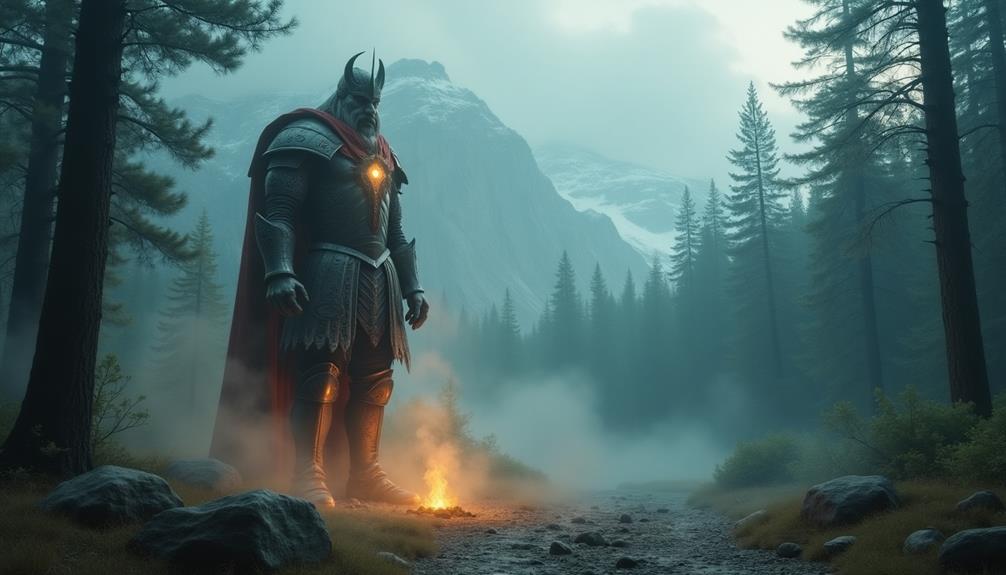
In the stories of Svyatogor, the juxtaposition of strength and morality emerges as a pivotal theme, inviting incisive examination. The strength dichotomy in these narratives is pronounced, as Svyatogor’s immense physical ability often stands in stark contrast to the moral dilemmas he encounters. This serves as a fertile ground for exploring the complex interplay between heroic ideals and ethical conflicts.
While Svyatogor’s strength is legendary, it is frequently challenged by situations that demand more than sheer physical power, urging a deeper reflection on the moral compass guiding his actions. Narratively, these tales prompt the audience to contemplate whether true heroism is defined solely by strength or if it necessitates a balance with moral integrity.
How does Svyatogor, a towering figure from Russian byliny, measure up against legendary heroes like Hercules or Beowulf? Svyatogor’s legacy is deeply embedded in the cultural symbolism of Russian folklore, where he embodies the hero archetype akin to his Western counterparts.
Like Hercules, known for his titanic strength and epic labors, Svyatogor represents the raw, uncontrollable forces of nature. These mythic parallels highlight a fundamental narrative: the struggle and eventual succumbing to fate, a theme resonant across epic traditions.
In comparing Svyatogor to Beowulf, another legendary hero, we explore the concept of heroic duty and destiny. While Beowulf’s narrative is defined by his battles against monstrous foes and his pursuit of glory, Svyatogor’s tales often focus on his interactions with other heroes and the inevitable weight of his own power.
Epic comparisons reveal that, like Beowulf, Svyatogor’s stories serve as moral and cultural touchstones, reflecting the values and existential questions of their respective societies.
Thus, Svyatogor stands alongside Hercules and Beowulf not only through shared heroic traits but also as a significant cultural symbol, illustrating universal themes of strength, fate, and the human condition.
Byliny and Svyatogor in Russian Folklore
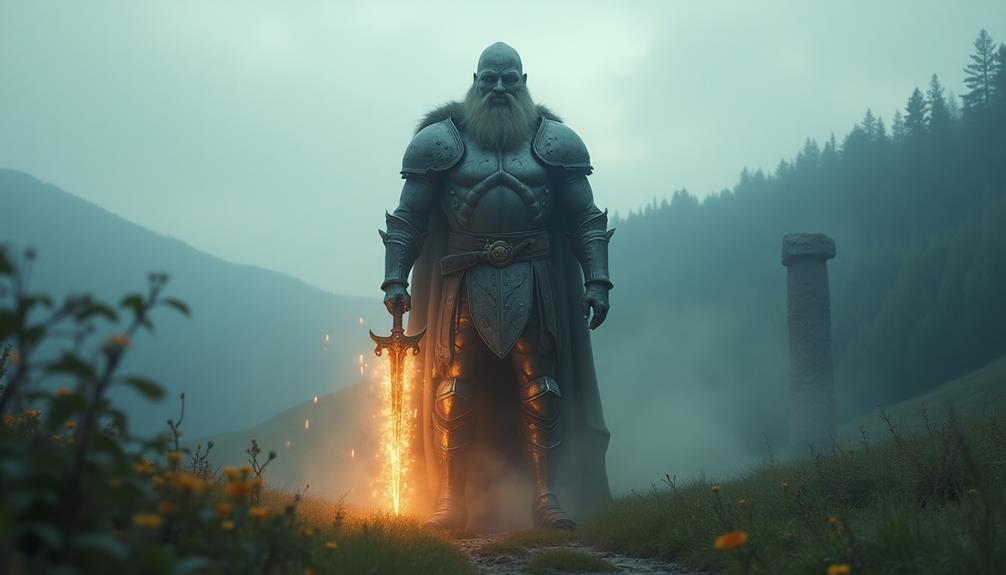
Central to Russian folklore, byliny are epic tales that capture the cultural essence and historical consciousness of the Russian people. These narratives, passed down through generations, feature grand epic heroes such as Svyatogor, a giant imbued with immense strength and wisdom.
Svyatogor’s story, woven with folklore motifs, serves as a profound reflection of the mythical landscapes that define Russian cultural symbolism. His presence in these tales highlights the interplay between human and supernatural domains, a frequent theme in byliny.
Svyatogor’s character embodies the quintessential traits of an epic hero, confronting challenges that test both his physical prowess and moral integrity. His adventures often explore the tension between human limitations and the unfathomable power of nature, illustrating pivotal lessons about humility and respect.
As a figure rooted in the mythical landscapes of Russian folklore, Svyatogor bridges the gap between the mundane and the mystical.
The narratives surrounding Svyatogor offer a glimpse into the values and beliefs of ancient Russia, revealing how these epic stories functioned as both entertainment and moral education. Through these tales, the cultural symbolism inherent in byliny continues to resonate with audiences today.


